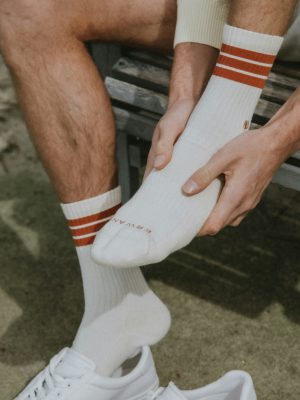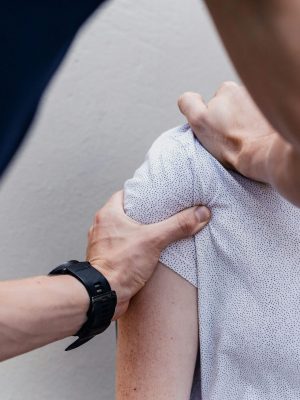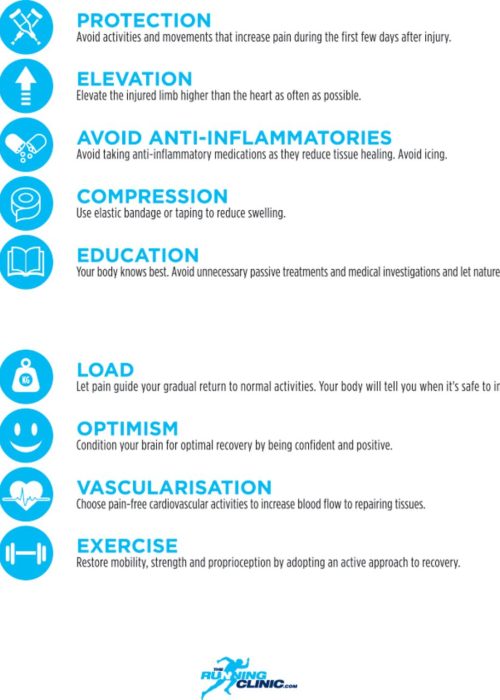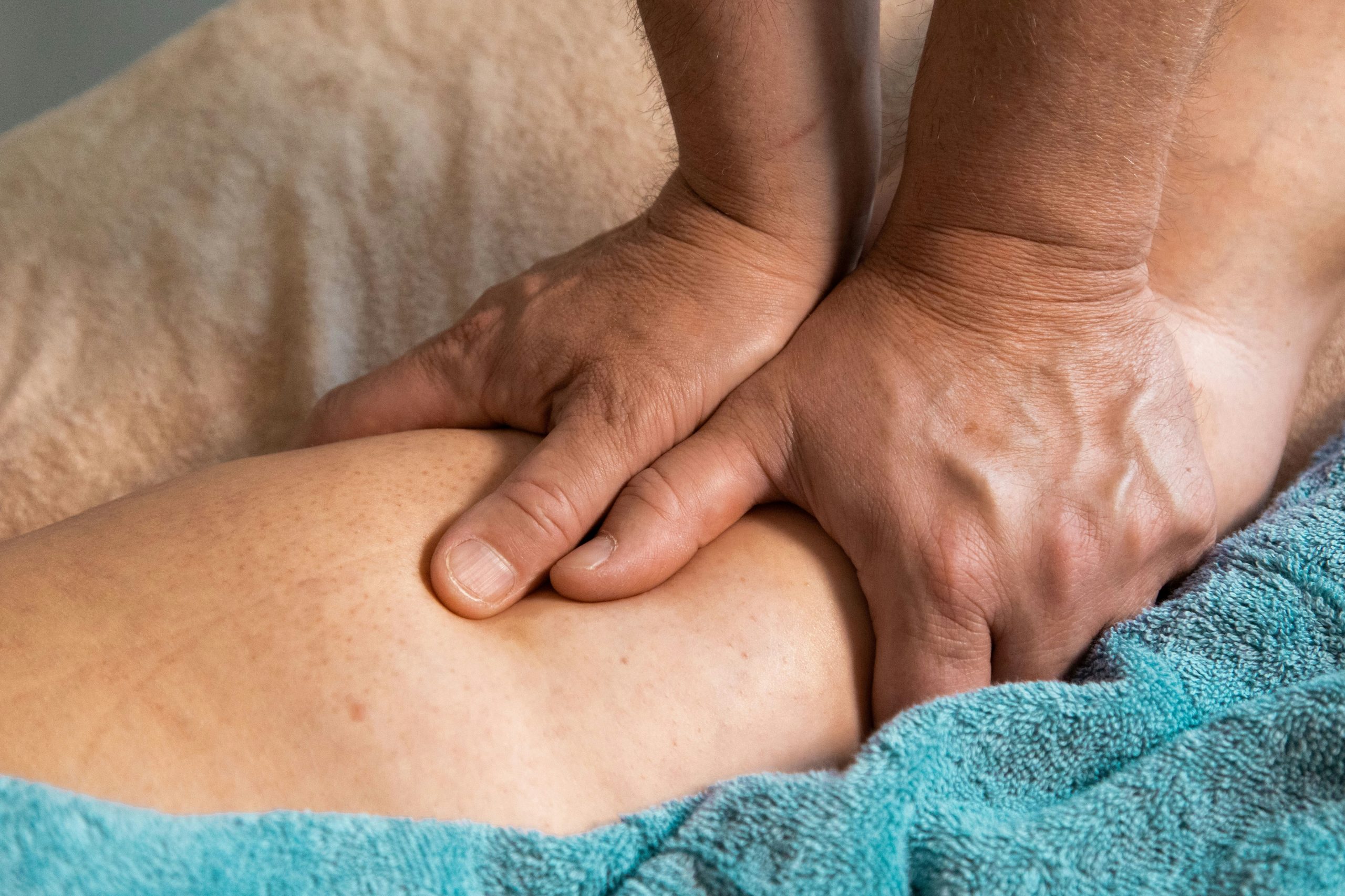Injury Recovery Guide: What to Do After a Strain, Tear, or Sprain
What Does Recovery After a Strain Look Like?
Muscle and joint injuries are common, but knowing how to manage them properly can make all the difference in your recovery. Whether you’ve suffered a strain, tear, or sprain, understanding your injury and the role of rehabilitation can help you heal safely and efficiently. In this post, we’ll break down these injuries, discuss when to seek professional help, and highlight the PEACE & LOVE approach to acute injury recovery.

Strain vs. Tear vs. Sprain: What’s the Difference?
Understanding the type of injury you’ve sustained is the first step toward effective treatment.
- Strain – A strain occurs when a muscle or tendon is overstretched or slightly torn due to excessive force or repetitive movement. This often happens in activities that require sudden acceleration or deceleration, such as sprinting or lifting heavy objects improperly.
- Tear – A tear is a more severe form of strain where the muscle or tendon is partially or completely ruptured. This injury typically causes immediate pain, swelling, and sometimes even bruising.
- Sprain – A sprain refers to an injury of the ligaments, which connect bones together. Sprains commonly affect the ankles, knees, and wrists and occur when a joint is twisted beyond its normal range of motion.
Stages of Recovery After a Strain
| Phase | Timeframe | What’s Happening? | What You Should Do |
|---|---|---|---|
| Acute Phase | First few days | Inflammation, pain, and swelling peak. Movement is limited. | Protect the area, avoid excessive rest, elevate, follow PEACE principles. |
| Subacute Phase | 1-3 weeks | Swelling decreases, movement improves, early tissue repair begins. | Start gentle mobility exercises, introduce light resistance training, consider soft tissue therapy. |
| Rehabilitation Phase | 3+ weeks | Strength and function improve, preparing for a return to normal activities. | Progressively increase strength training, practice functional movements, reintegrate activities with guidance. |
The Role of Physical Therapy in Recovery
Rehabilitation plays a crucial role in helping you regain strength, mobility, and function after an injury. A physiotherapist will create a tailored recovery plan that includes:
- Pain Management: Techniques such as manual therapy, taping, and dry needling (IMS) to reduce discomfort.
- Mobility and Strengthening Exercises: Targeted exercises to restore flexibility and prevent further injury.
- Education and Prevention Strategies: Learning proper movement mechanics and techniques to avoid re-injury.
- Gradual Return to Activity: A structured program that helps you safely return to daily activities, sports, or work.

When to Seek Help for Your Injury
While minor strains may heal on their own with rest and proper care, you should seek professional help if you experience:
- Persistent pain lasting more than a few days
- Significant swelling or bruising
- Difficulty bearing weight or moving the affected area
- A noticeable gap or defect in the muscle (possible complete tear)
- Recurrent injuries in the same area
Early intervention with physiotherapy can speed up your recovery and reduce the risk of long-term complications.
The PEACE & LOVE Approach to Acute Injuries
Modern injury management goes beyond the traditional RICE (Rest, Ice, Compression, Elevation) method. The PEACE & LOVE framework provides a more comprehensive approach to healing. Learn more about it here: PEACE & LOVE theory.
PEACE (Initial Management)
- P – Protect: Avoid activities that increase pain for the first few days.
- E – Elevate: Raise the injured limb above heart level when possible.
- A – Avoid anti-inflammatory drugs: Inflammation is part of the healing process.
- C – Compress: Use a bandage or taping to minimize swelling.
- E – Educate: Learn about your injury and treatment options.
LOVE (Ongoing Management)
- L – Load: Gradually reintroduce movement and activity to promote tissue repair.
- O – Optimism: A positive mindset can improve recovery outcomes.
- V – Vascularization: Engage in gentle cardio to increase blood flow.
- E – Exercise: Progressive rehabilitation exercises restore strength and mobility.
How Long Does Recovery Take?
Recovery time depends on the severity of the injury:
- Mild strains and sprains: 1-3 weeks
- Moderate strains and sprains: 3-6 weeks
- Severe tears and high-grade sprains: Several months, sometimes requiring surgical intervention
Ankle sprains, for example, can take 2-6 weeks for mild cases, whereas more severe ligament injuries may take several months with structured rehab. A physiotherapist can help determine the best recovery timeline based on your specific injury and lifestyle.
Now Accepting New Clients at Our New Clinic!
If you’re recovering from a strain, tear, or sprain and need professional guidance, we’re here to help! Haven Wellness Physiotherapy is now accepting new clients at our new physio clinic location at 3754 W 10th Ave. Our experienced physiotherapists are ready to create a personalized treatment plan to get you back to doing what you love.





